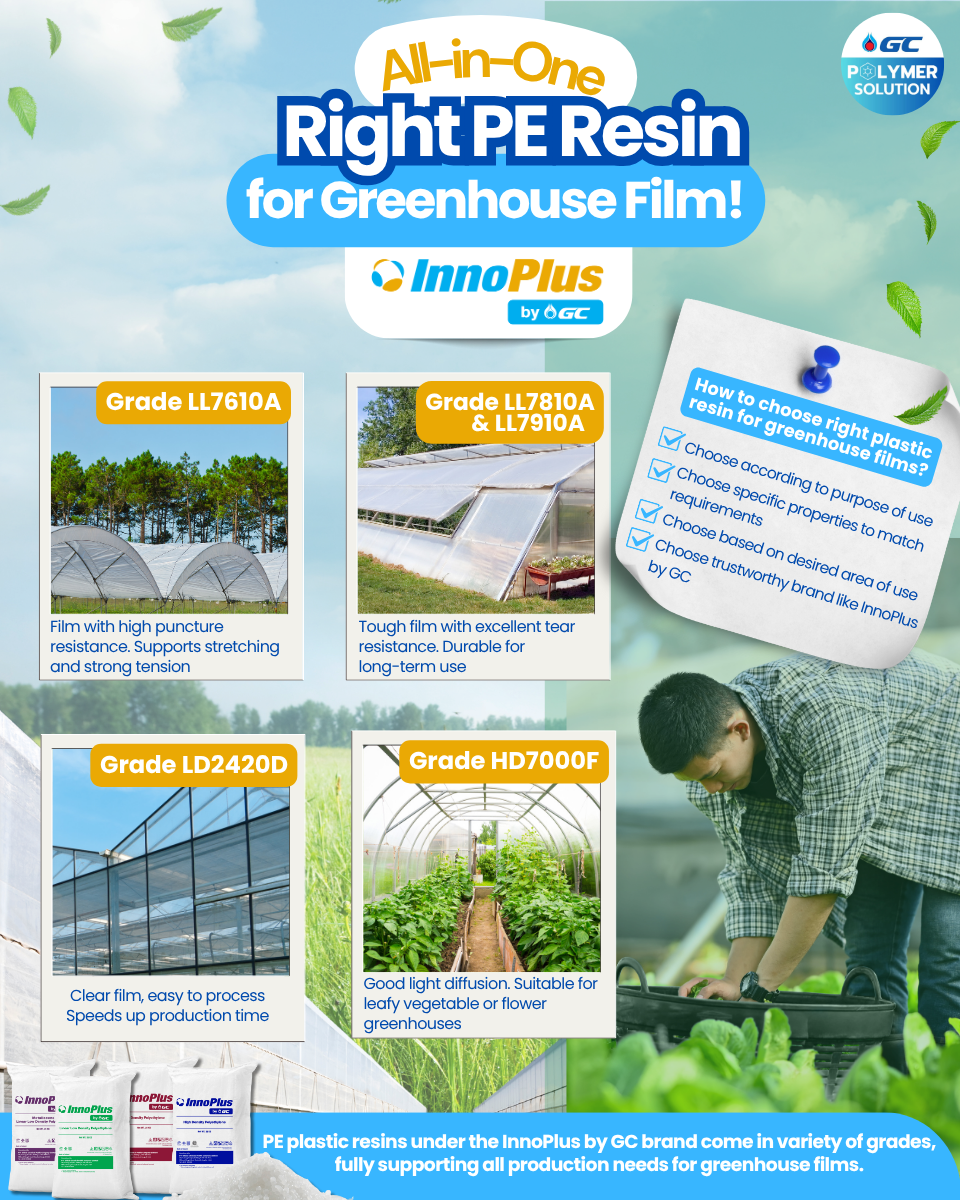Advanced Search
Results 1901 - 1920 of 2131
MONOETHYLENE GLYCOL (MEG)
MEG is most commonly used as chemical intermediate in the manufacture of polyester resins and textile fibers. MEG is also wildly used as automotive antifreeze due to its low freezing point when mixed with water and used as heat transfer fluids for ventilation and air-conditioning systems shown as below.
DIETHYLENE GLYCOL (DEG)
DEG is most commonly used as the chemical Intermediate for the production of unsaturated Polyester resins, Polyester Polyol, Thermoplastic Polyurethanes, emulsifiers and Morpholine. Moreover, DEG is used in applications which require hygroscopicity, lubricants, and low volatility such as plasticizer, solvent in printing ink, textile lubricant, humectants and dehydrating agents.
TRIETHYLENE GLYCOL (TEG)
TEG is most commonly used for natural gas dehydration to strip the water out of the gas. TEG is wildly used in applications which require higher boiling point, higher molecular weight with low volatility such as plasticizer, unsaturated polyester resin, emulsifiers, lubricants, heat transfer fluids and solvent for equipment cleaning, printing ink.
MONOETHANOLAMINE (MEA)
MEA is used for a chemical intermediate in the manufacture of detergents, personal care products, surfactants, pharmaceuticals, gas treating as a gas-scrubbing agent for the absorption and removal of H2S and CO2 from refinery and natural gas streams.
DIETHANOLAMINE (DEA)
DEA is used for a chemical intermediate in the manufacture of detergents, personal care products, surfactants, agricultural chemicals (herbicides), gas treating as a gas scrubber in refinery and corrosion inhibitors.
Herbicides that are widely used in agriculture and gardening by spraying and absorbing through the leaves, injection method into the trunk or drop at the plant’s top
TRIETHANOLAMINE (TEA)
TEA is used as a component of cement grinding aid formulation to improve the efficiency of high-quality cement grinding operations while reducing energy consumption and reducing production time, thus reducing production costs. Also has the ability to accelerate formation for concrete (accelerating admixture). This reduces the time needed to set up and increase the strength of concrete.
Cement grinding aid use to improve the efficiency of high-quality cement grinding operations while reducing energy consumption and reducing production time, thus reducing production costs.
NON-VOC AND GREEN SOLVENT
High performance Non-VOCs and green solvent for water-based decorative paint performs well in all types of latex paints like acrylic, styrene-acrylic, etc., in a variety of weather conditions, and over substrates with different levels of porosity.
With function of increasing open time, wet edge over a range of conditions, freeze thaw stability and anti-skinning in water-based decorative paint and has no significant interference effect on paint properties including viscosity, pH, color development/film properties like dirt pick up, gloss, hardness, scrub resistance, washability, water resistance and mud cracking resistance.
Decorative paint for building with durability from various conditions has elastic properties to the surface, prevent water leakage, resistant to both external and internal fungi and easy to clean Some decorative paints can also help reflect the heat in order to save the energy of the cooler. And the color is odorless Non-toxic, safe for residents.
DIETHYLENE GLYCOL (DEG)
DEG is most commonly used as the chemical Intermediate for the production of unsaturated Polyester resins, Polyester Polyol, Thermoplastic Polyurethanes, emulsifiers and Morpholine. Moreover, DEG is used in applications which require hygroscopicity, lubricants, and low volatility such as plasticizer, solvent in printing ink, textile lubricant, humectants and dehydrating agents.
MONOETHYLENE GLYCOL (MEG)
MEG is most commonly used as chemical intermediate in the manufacture of polyester resins and textile fibers. MEG is also wildly used as automotive antifreeze due to its low freezing point when mixed with water and used as heat transfer fluids for ventilation and air-conditioning systems shown as below.
DIETHYLENE GLYCOL (DEG)
DEG is most commonly used as the chemical Intermediate for the production of unsaturated Polyester resins, Polyester Polyol, Thermoplastic Polyurethanes, emulsifiers and Morpholine. Moreover, DEG is used in applications which require hygroscopicity, lubricants, and low volatility such as plasticizer, solvent in printing ink, textile lubricant, humectants and dehydrating agents.
TRIETHYLENE GLYCOL (TEG)
TEG is most commonly used for natural gas dehydration to strip the water out of the gas. TEG is wildly used in applications which require higher boiling point, higher molecular weight with low volatility such as plasticizer, unsaturated polyester resin, emulsifiers, lubricants, heat transfer fluids and solvent for equipment cleaning, printing ink.
MONOETHANOLAMINE (MEA)
MEA is used for a chemical intermediate in the manufacture of detergents, personal care products, surfactants, pharmaceuticals, gas treating as a gas-scrubbing agent for the absorption and removal of H2S and CO2 from refinery and natural gas streams.
DIETHANOLAMINE (DEA)
DEA is used for a chemical intermediate in the manufacture of detergents, personal care products, surfactants, agricultural chemicals (herbicides), gas treating as a gas scrubber in refinery and corrosion inhibitors.
Herbicides that are widely used in agriculture and gardening by spraying and absorbing through the leaves, injection method into the trunk or drop at the plant’s top
DIETHANOLAMINE (DEA)
DEA is used for a chemical intermediate in the manufacture of detergents, personal care products, surfactants, agricultural chemicals (herbicides), gas treating as a gas scrubber in refinery and corrosion inhibitors.
Herbicides that are widely used in agriculture and gardening by spraying and absorbing through the leaves, injection method into the trunk or drop at the plant’s top
TRIETHANOLAMINE (TEA)
TEA is used as a component of cement grinding aid formulation to improve the efficiency of high-quality cement grinding operations while reducing energy consumption and reducing production time, thus reducing production costs. Also has the ability to accelerate formation for concrete (accelerating admixture). This reduces the time needed to set up and increase the strength of concrete.
Cement grinding aid use to improve the efficiency of high-quality cement grinding operations while reducing energy consumption and reducing production time, thus reducing production costs.
NON-VOC AND GREEN SOLVENT
High performance Non-VOCs and green solvent for water-based decorative paint performs well in all types of latex paints like acrylic, styrene-acrylic, etc., in a variety of weather conditions, and over substrates with different levels of porosity.
With function of increasing open time, wet edge over a range of conditions, freeze thaw stability and anti-skinning in water-based decorative paint and has no significant interference effect on paint properties including viscosity, pH, color development/film properties like dirt pick up, gloss, hardness, scrub resistance, washability, water resistance and mud cracking resistance.
Decorative paint for building with durability from various conditions has elastic properties to the surface, prevent water leakage, resistant to both external and internal fungi and easy to clean Some decorative paints can also help reflect the heat in order to save the energy of the cooler. And the color is odorless Non-toxic, safe for residents.
H350E
The Role of Greenhouse Film in Advancing Thai Agriculture
Climate change has become a significant factor contributing to increased uncertainty in agricultural cultivation, affecting both the quality and quantity of yields. As a result, farmers across many regions in Thailand have started shifting towards modern agricultural technologies to enhance productivity stability. One widely adopted method is the use of greenhouse film designed to create controlled environments essential for plant growth including optimized light exposure, temperature, humidity, and protection from pests and plant diseases.

The development of greenhouse film is based on the fact that plants thrive best under well-controlled conditions. Key factors that directly affect plant growth include exposure to optimal light wavelengths for photosynthesis, relative humidity that supports stomatal opening and transpiration, and regulated temperature that allows for extended growing seasons while minimizing risks from pests and diseases.
In Thailand, the application of greenhouse film has demonstrated clear results across several projects. These films have been used to cultivate highland vegetables, herbs, and ornamental flowers contributing to improved yield and enhanced quality of life for local farmers.
Case Study: Collaboration for High-Quality Greenhouse Film Development
A notable example of successful greenhouse film adoption in Thailand is the collaboration between GC and partners in promoting agriculture in highland areas. The project’s objective is to enhance the cultivation efficiency of cool-climate vegetables by utilizing greenhouse film technology.
As part of this collaboration, InnoPlus by GC polyethylene resin was selected for use in a formulation that combines LLDPE, mLLDPE, and LDPE to produce a film with an optimal balance of clarity, toughness, and flexibility well-suited for the challenging conditions of highland environment.
Key highlights of the greenhouse film developed in this initiative:
• Downgauging: The film thickness was reduced from 150 microns to just 100 microns — a 50% reduction in plastic usage without compromising strength or durability.
• Field-tested Performance: Real cultivation by farmers showed no negative impact on plant growth or yield.
• UV-resistant and long-lasting: Developed to last over three years, even under harsh weather conditions, with strong UV protection and tear resistance.
Currently, these greenhouse films are widely used to grow highland vegetables like lettuce, red oak, green oak, and flowers such as gerbera and roses, all of which are key economic crops in the Royal Project Foundation.
Impact and Benefits:
• 30–50% average increase in yields compared to open-field cultivation
• Reduced chemical and water usage in farming
• Lower long-term production costs due to film durability and reduced plastic resin consumption
• Improved livelihoods for highland farmers through better-quality harvests and increased income
This case study showcases the potential of tailored greenhouse film technology developed to meet Thailand’s agricultural context combining innovative design, high-performance materials, and sustainability.
As Thailand’s leading plastic resin producer, GC has developed a range of InnoPlus by GC grades specifically engineered for greenhouse film production. These include:
• LL7610A – High tear resistance, withstands wind and mechanical stress
• LL7810A / LL7910A – High toughness for extended film lifespan
• LD2420D – High clarity of film with easy processing, reducing production time
• HD7000F – Even light diffusion, supporting optimal plant photosynthesis

These resins can be blended to enhance the film’s performance and enable downgauging, which aligns with both business efficiency and environmental sustainability.
Greenhouse film represents a strategic solution to strengthen Thailand’s agricultural productivity enabling food security, yield quality control, and long-term sustainability. The success of such systems relies heavily on the use of high-quality materials, particularly PE resins specifically developed by GC, which are optimized for demanding agricultural conditions. Through innovation and collaboration, GC continues to play a vital role in supporting sustainable farming practices in Thailand.
For more information about our products or inquiries, please fill out the contact form
Bioplastics Compound (Rigid Packaging)
Bioplastics Compound (Rigid Packaging)
Biocompound compostable material made from renewable source. Designed suitable for conventional machine such as extrusion and injection. These products are certified industrial compostable by DIN Certco according to standard EN13431


